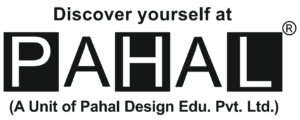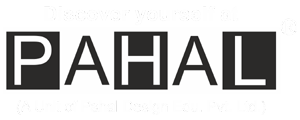Industrial Designer & Career
 Who This Career is For?
Who This Career is For?
Industrial designers must be people who have the ability to constantly think critically in order to maximize efficiency of a production process. They must excel in disciplines including mathematics, problem solving and writing.
People in the field should be decisive personalities who are able to not only pass judgments but also ensure that they are being implemented. Industrial designers must be excellent communicators who are able to put across information effectually. Active listeners would fit into this job very well.
Want to know more about it?
The main responsibility of an industrial designer is to ensure that various factors of production, including land, labor, capital and entrepreneurship are being utilized in the most efficient and cost-effective manner. They generally try to alter the production process so that they can lower the cost of production and maximize the level of output of the production process.
Industrial designers often formulate equations connection inputs and outputs, taking into account different cost, demand and supply levels. They explore various means of product distribution and then select the most feasible method.
Industrial designers must be familiar with all the latest technologies that could be applied to the production process they are in charge of. Only then can they properly analyze the scientific data put in front of them.
While industrial designers normally work independently, there is a certain level of communication required with both the managerial and engineering sides of production. They are generally required to bring on board both parties to agree to a certain method of production. This is often done through reports or presentations.
Since the job is closely linked to other managerial jobs within a firm, many industrial designers get transferred to administration/management departments. This is a preferred path for a lot of industrial designers as it is limited to ones office, and it pays more.
It is essential for industrial designers to have a bachelor’s degree in either engineering, industrial design or production. In India, BE students are given considerable preference to students of other disciplines.
Individuals with master’s degrees or any vocational training in the field are most likely to secure a good job. Employers look for applicants who have academic knowledge of industrial processes, principles of design, and manufacturing methods.
What are Salary Prospects?
The average salary, in 2010, for all industrial designers in the USA was approximately $65,000 and this is expected to increase steadily at the rate of inflation. Industrial designers with master’s degrees secure, on average, higher salaries than those with lesser qualifications.
In India, the salary varies considerably depending on who an industrial designers works for. If one works for a big multinational corporation, they can expect to earn anywhere up to Rs. 850,000 per annum. However, industrial designers generally tend to earn Rs. 400,000 per annum on average. Experience and a good education background also increase salary prospects.
Industrial designers generally enjoy several fringe benefits, including paid vacation, sick leave, health insurance and pension plans. These may vary depending on employers so industrial designers are often better off working for more reputable firms.
How is Life?
Industrial designers generally work in offices, but they spend a considerable proportion of their daily time in factories monitoring the production process. Their job may also include occasional trips to warehouses, laboratories, transportation depots and other parts of their employer’s production and distribution network.
The job hours in this field are generally quite fixed, and overtime is not normally required. However, there can be a lot of pressure on industrial designers when design standards are being remodeled.
What Perks come along with this career?
There are a number of positives in the field of industrial designing. First of all, there is a considerable amount of job security within this field. Firms generally avoid switching industrial designers because the job requires long term stability in order to achieve productivity maximization goals.
Additionally, industrial designers, who are generally people with backgrounds in science, with experience often get opportunities to enter the management of the corporation they work with.
Moreover, the outlook of this career is generally quite positive even during times of recession. When economic conditions are not favorable, firms often try to lower their cost of production by employing industrial designers and industrial engineers.
Which Downsides are there in this career?
A career as an industrial designer can get monotonous. Also, people in this field normally have very little to work with. They must constantly innovate to improve production methods of a particular industry, with little room to maneuver.
A career as an industrial designer can also be frustrating because ones efforts results are not immediately shown. Typically, it takes a long time for an industrial designer’s suggestions to be implemented, and even longer for the results to show. This long interval often creates alienation of the individual from the larger industrial process.
How is Competition?
The level of competition in this field is quite high. This is because there is expected to be a 9% growth in the field between 2008 and 2018. However, the supply of industrial designers is likely to remain on the higher side as well, so only the best professionals are likely to get lucrative placements.
In India in particular, industrial designers have never been in demand at the same level as they are currently. With the industrial boom in the past decade, firms are increasingly eager to lower costs and remain competitive. As a result, the outlook for industrial designers is very healthy.
Locations where this career is good?
Any place where there is industry is likely to see a sizeable demand for industrial designers. The level of demand is directly proportional to the level of both medium and large scale industries, regardless of the economy type.
In India, all urban industrial hubs are generating exciting new opportunities for qualified industrial designers. Since industry in India is spread all across the country, it is difficult to pinpoint a specific few places where this career provides extraordinary opportunities.















